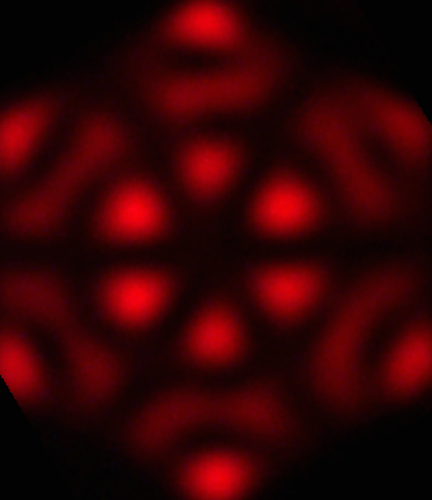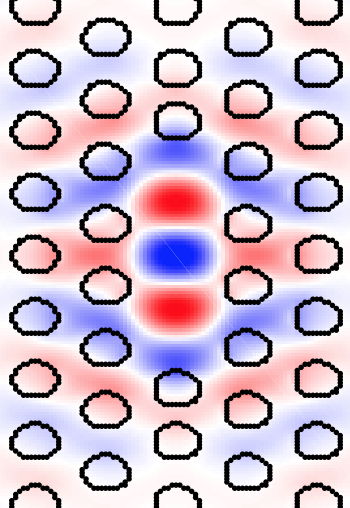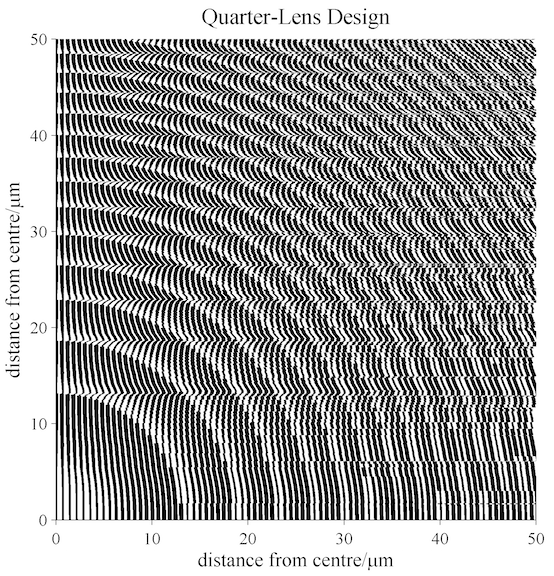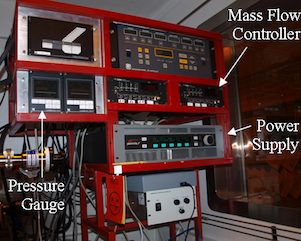
2016/2017 Masters Project: Controlled Excitation of Higher-Order Modes in Optofluidic Waveguides
Location: University of Cambridge Cavendish Laboratory Optofluidics Group. Supervisor: Dr. T. Euser.
We demonstrated excitation of higher order modes (up to LP3,3) in a water-filled hollow core kagome fibre. Mode excitation was achieved by means of end-fire coupling whereby a spatial light modulator is used to project a given intensity and phase distribution onto the fibre’s input facet. An optimisation algorithm automatically adjusts the hologram to obtain pure mode excitation with minimal manual alignment. The algorithm uses results from a hexagonal capillary simulation as a reference for the optimisation process. The setup was also used to perform angled plane wave excitation and measure the modal phase index of a selection of higher order modes.

Summer 2016: Modelling Photonic Crystal Cavities using 2D Simulations
Location: University of Ottawa Quantum Photonics Group. Supervisors: Prof. R. W. Boyd and Dr J. Upham. Duration: eleven weeks.
I developed a method of modelling the Q-factor of photonic crystal cavities from 2D simulations. This reduces the computational requirements for photonic cavity design by several orders of magnitude compared to the 3D methods currently in use. The project yielded some very promising results which we are currently preparing for publication: please contact me for further details including talk slides.
As a side project I designed an experimental setup to measure SRR metasurfaces with the aim of showing that the work published in [Leon I. D. et al., 2015. Nature Scientific Reports, 5, 13034.] can be used to produce an ultra-thin circular polarisation sorter. Further simulation, fabrication and measurement are required before results can be published.

Summer 2015: Planar Nano-structured Silicon Lenses for Optical Trapping
Location: University of York Physics Department Photonics Group. Supervisors: Prof. T. F. Krauss and D. Stellinga. Duration: nine weeks.
I designed, fabricated and tested silicon high contrast grating micro-lenses with a high numerical aperture that operated in water for the purposes of optical trapping. The lenses consisted of silicon gratings with a locally varying period and duty-cycle which map the phase profile of a parabolic reflector onto the flat structure. I fabricated the lenses using electron-beam lithography. A collaborating group have recently demonstrated trapping of 5μm polystyrene beads with my devices and we are now in the process of gathering materials for a paper.

Summer 2012: Automating a Sputtering System
Location: University of St Andrews Physics Department Microphotonics Group. Supervisors: Prof. T. F. Krauss and Dr C. Reardon. Duration: four weeks.
The aim of this project was to automate an ultra-high vacuum sputtering system. It involved a combination of hardware and software interfacing with various instruments and the writing of a control program in Labview to execute the sputtering process. The program was tested by performing three sputter deposition runs and the results were examined using a scanning electron microscope and profilometer.